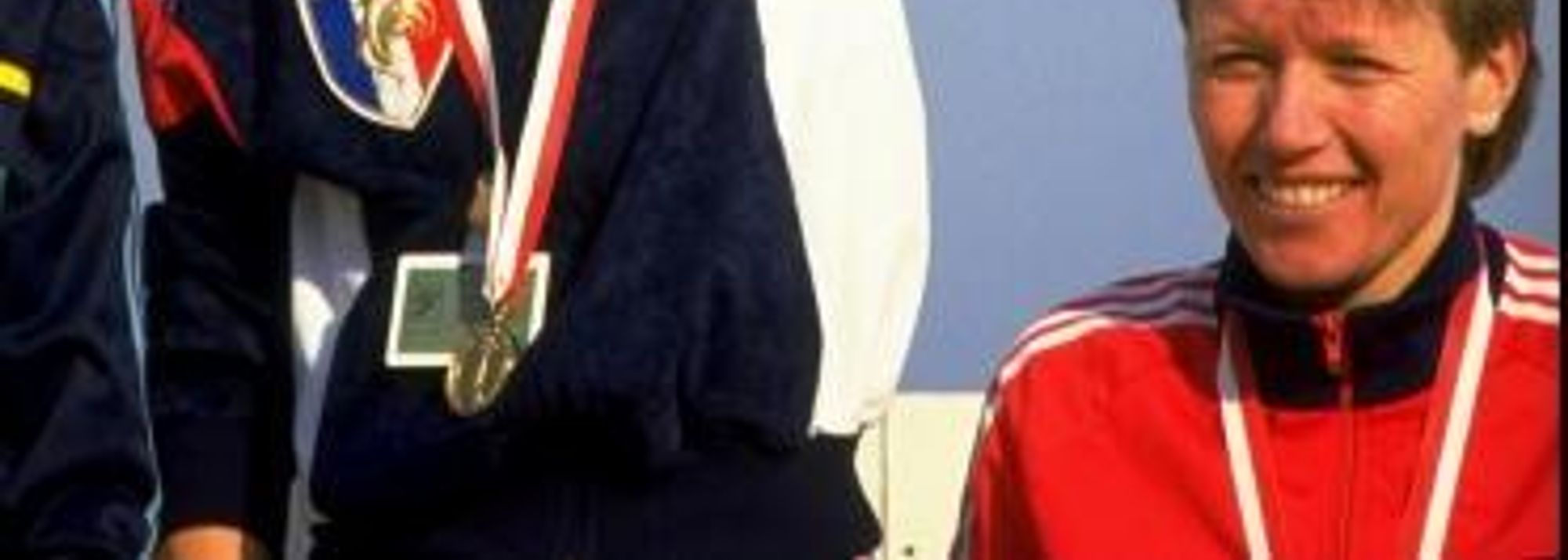Annette Sergent (FRA) celebrates her World XC Champs win in 1987 (© Getty Images)
Annette Sergent was the winner of the IAAF World Cross Country Championships title in 1987 and 1989, and now she is applying her expertise to an imaginative scheme to encourage cross-country amongst French youth by spearheading the country’s National Cross Week.
A week in this case is in fact 10 days – from 15 to the 25 October - and during this time tens of thousands of students throughout the length and breadth of the country and across all the age ranges from nursery school up to university level will compete at cross-country in an event co-ordinated by the French Athletics Federation.
The success of the scheme can be seen in its numbers. When it first started five years ago, National Cross Week attracted 80,000 participants. For 2007, 350,000 took part from 650 academic establishments and this year organisers are hoping to reach out to half a million pupils from 1000 establishments.
“Cross country is a very popular event in France,” enthuses Sergent-Petit. “In certain areas of the country, very strong indeed.”
Last year in the northern Pas de Calais region alone, no fewer than 52 schools took part. This year, one school in Liévin will assemble 800 pupils this coming Tuesday (22).
It was in 1987 that Sergent broke a 22-year drought for France when she lifted the World Cross Country title in Poland, beating Scotland’s Liz Lynch by two seconds, the widest margin of victory of the day. Now she hopes that this five-year-old brainchild will eventually produce another winner. The greater the number of participants, the more likely it is that new talent will emerge.
For Gérard Cambreling of the French Federation, who coordinates the event, its importance lies in the values the sport instils: “At a time when cardio-vascular problems, smoking and obesity are at the heart of public health concerns, the French Federation looks favourably on the mobilisation of the biggest possible number of our youth through cross country.”
“This most basic of all athletics disciplines is an excellent means, in fact, of getting everyone to move themselves by running and in natural surroundings.”
“Since more often than not cross country is organised in natural spaces which are close to urban areas - parks, leisure centres and woods – the sport can become a means of re-appropriating these spaces for urbanites, children and parents alike, who are often unfamiliar with these resources or are completely unaware of their existence.”
For most levels, the courses vary between laps of 500m to 800m with athletes competing in teams of five or six, covering the distance in relays. The degree of difficulty varies with the age-range and there is accommodation for pupils who are overweight or with respiratory problems who can walk the lap. At university level, the object is to run the maximum distance possible in the course of an hour, each runner being encouraged to cover multiple laps.
The emphasis is deliberately laid on team-work – mixed teams are encouraged - at all levels as a means of generating cohesion, mixing of the sexes and environmental awareness.
This year, the Federation is studying the possibility of rewarding the top 100 schools with sports equipment as well as diplomas.
But for Sergent, at its heart, it is the sport’s simplicity which she emphasises: “It’s a basic activity,” she says. “It’s a natural event, everyone can try it whatever their age.”
Michael Butcher for the IAAF



